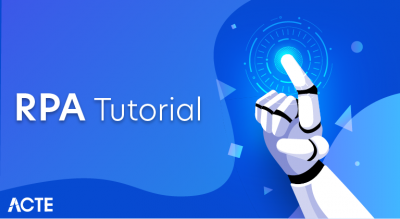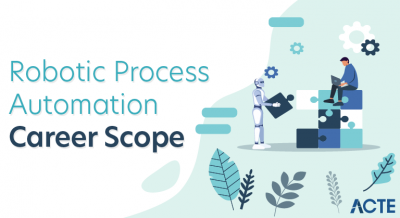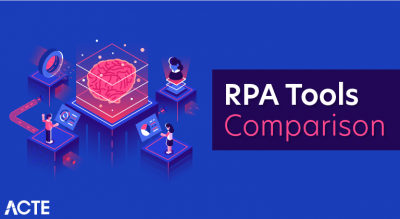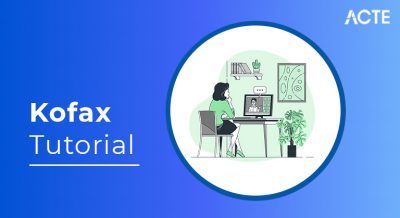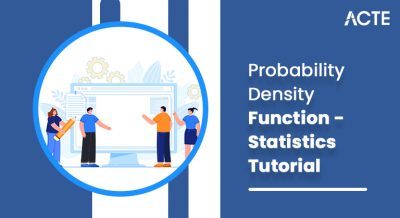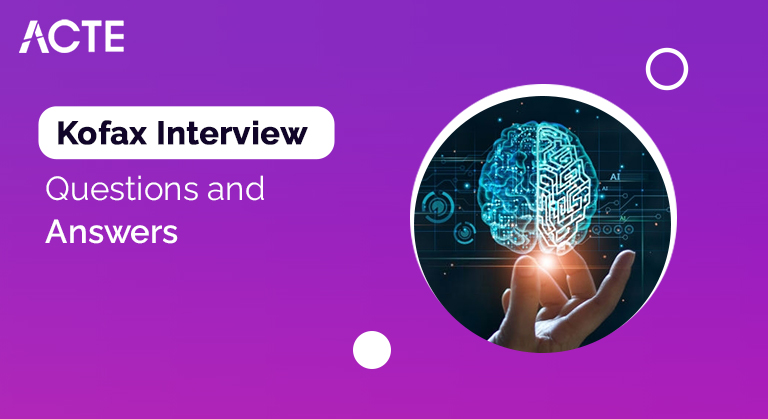
If you’re looking for Kofax Interview Questions for Experienced or Freshers, you are in the right place. There are a lot of opportunities from many reputed companies in the world. According to research, Kofax has a market share of about 29.1%. So, You still have the opportunity to move ahead in your career in Kofax Development. ACTE offers Kofax Interview Questions 2021 that help you in cracking your interview & acquire a dream career as Kofax Developer.
1. What do you know about the initial steps in the first phase of the system booting process?
Ans:
There is undoubtedly a unique technique known as swapping. Usually, the equal is built concurrently with booting. All tasks and duties that can be completed with the CPU during booting are managed using the Swapper. Swapper allows the CPU to process all of these requests regarding memory allocation.
2. Could You List A Few Advantages Of Data Integration And Analysis?
Ans:
A business experiment has many benefits, and it’s only sometimes necessary for every company to have them all on board regularly. Numerous things could affect them. The principal experts in question are:
- Effective use of information
- Expense-effective methods for information and statistics preservation
- Reports that are trustworthy and timely can typically be guaranteed.
- It is possible to get flexibility without significant funding.
- It is possible to remove risks.
3. What are the swappers’ subcomponents made during memory allocation?
Ans:
The system adapter, v hand, and db flush are these. These three responsibilities all operate simultaneously to guarantee that the procedure proceeds smoothly without breaking any rules. Users can edit certain sub-components using specific IDS. Typically, this is accomplished for security and authentication purposes.
4. What Can You List A Few System Calls You May Utilize To Control The Process?
Ans:
- These are forks () used to develop new methods.
- The technique with priorities is addressed by fine(), which comes in second.
- The third one is called the process identifier via getdip().
- The fourth function is brk(), which has a specific purpose to reduce or strengthen the size of the statistics phase.
5. When managing a process, a user needs different IDs. Tell me more about these IDs associated with a process.
Ans:
- In most cases, they are referred to as Process IDS. The OS identifies them with the help of many IDS so that the consumer can create and assign the obligations. The determined process refers to the concerned procedure that the user manages. The individual in question, the owner, is responsible for leading and managing the concerned ID.
- The Kofax software allows you to handle jobs via exceptional IDS without any limitations regarding execution. Users can grant access privileges to different constraints at the technique. While it may lengthen the runtime, this can also delay all errors and faults.
6. Could You Provide the Definition of Data Integration?
Ans:
A persistent desire is to combine the statistics uniquely to get the desired result. It’s not frequently the case. The records must have comparable resources. While merging the data, the user’s primary objective is to get a proper or unified view. The combined or integrated knowledge in companies may come from exceptional domains. Consumers want to feel at ease knowing the information must be combined based on several technologies.
7. What Distinguishes the Parent-Child Process From the Other?
Ans:
It is easy for a user to split a method into two modules. Toddler technique is the name given to the new procedure, which is called after the parent system from which it was derived. It’s feasible that they both be utilized for comparable purposes and possess similar qualities.
8. What Specifically Are You Aware Of Regarding The Kofax Fork?
Ans:
- The answer is that Fork is essentially a tool or command that allows users to accomplish two crucial tasks.
- It can be used, first, to distinguish a child’s technique from a parent’s. Second, it helps each of them carry out their directives.
- Some users also consider it when assessing the output quality before the mission is completed.
9. What Does “White Box Testing” Actually Mean?
Ans:
The answer is that as applications expand, there may be a persistent desire to examine the internal structure, which provides valuable information about how an application operates. This is how it may appear when the software is utilized to perform tasks other than its area of expertise. White container checking out is thought to use the same principle. Another name for white container checking out is apparent container testing.
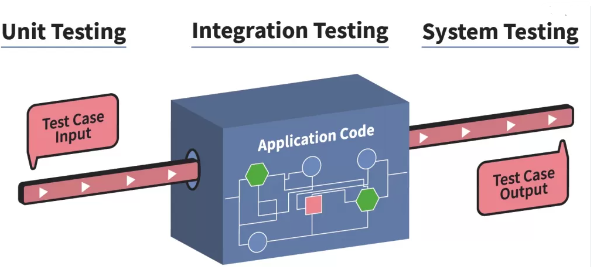
10. Is Communication Possible Between The Parent Process And The Child Process?
Ans:
In short, it’s feasible. You can use any inter-technique way for the conversation for this. Furthermore, a few unique tactics are available for use. Given a few guidelines, the figure may control every aspect of the child process.
11. How Much Do You Know About Kernel? What Role Does It Play?
Ans:
- The kernel employed in software is responsible for always maintaining several valuable data points beside it.
- This is due to the possibility that the parent technique will also name it. This is accomplished quickly, and the determiner gains complete control over the facts.
- Nonetheless, the amount of data that the kernel may store with it is typically strictly limited. Users can swap the default statistics or assign priority to any other statistics.
12. Is it possible to create a new process in Kofax based on an existing one?
Ans:
It becomes necessary when a particular technique gets too tricky to paint with. This is comparable to breaking out a method into several larger modules. Others typically create the best processes. Additionally, users can interact with them simultaneously and use the same commands.
13. Differentiate between Kofax Capture and Kofax TotalAgility.
Ans:
| Kofax Capture | Kofax TotalAgility |
|---|---|
| Document capture solution, focused on scanning and processing documents and data. | Comprehensive BPM and case management platform, extending beyond capture. |
| Specialized in document capture, recognition, and data extraction. | Offers end-to-end process automation, collaboration, analytics, and dynamic case management. |
14. What Exactly Is Pdi? Is It Possible To Do All Of This Using Just One System?
Ans:
The acronym for this is Physical Data Integration (PDI), and using a separate system to handle all responsibilities is only sometimes essential. This is because managing a significant amount of information is frequently desired. The finest illustration is data warehousing.
15. What Does “Data Mapping” Mean and What Does It Mean?
Ans:
The act of generating facts within fashions that may differ entirely or partially from one another is a straightforward operation referred to as mapping records. In essence, it is the initial step toward integrating facts. It is known to assist in transforming records from a source to a destination, which may or may not be described.
16. What are the Recommender Systems?
Ans:
An area of information filtering systems where the goal is to forecast consumer preferences or product ratings. Systems that provide recommendations are often utilized in films, news, books, merchandise, social media posts, music, and more.
17. What do you mean when you say “business plan”?
Ans:
- In essence, it’s an announcement that’s usually written to provide helpful information about the objectives of an organization. Additionally, there are facts about how to improve the same.
- The plans also outline the paths to achieve the goals and the challenging circumstances that the company may encounter. Depending on the plan’s structure and other components, it might have details on the past of anything connected to the business or the final objective.
18. What Kind Of Issues Might An Organization Run Into When Managing Customer Communication Process Properly?
Ans:
- Several issues could indicate their existence. Here are a few of them:
- Lack of communication tools; insufficient talent
- No prompt feedback to the customer. The business firm provided no accurate information to the buyer
- issues related to IT
- Unstructured consumer data stored in the database
- Control issues with databases
- The difficulties involved in managing time
19. What Is Your Level of Risk Management Understanding?
Ans:
In response, many dangers may be connected to the tasks that employees complete or fulfill within a corporation. Danger management is identifying the equals before they commit the error and getting rid of them. Numerous elements are taken into account, some of which include assessing the same, controlling, analyzing, and avoiding.
20. Why is data cleaning so crucial to analysis?
Ans:
It takes a lot of work to clean data from multiple sources so that data scientists or analysts can work with it in a format they can understand. This is because the volume of data generated in these sources and their number increase the cleaning time exponentially. Data cleansing alone can take up to 80% of the time, making it an essential step in the analysis process.
21. Do You Know Anything About Plan Baselines? How Do They Exist?
Ans:
These are unique renditions of the parallel plans depicted just before the final implementation starts. They guarantee strong communication and excellence across the board. Generally speaking, it’s okay for them to all be equally significant and impactful on an organization. Still, they’re taken into account to understand more about the execution.
22. What Advantages Does Data Scanning Offer?
Ans:
- The answer is that there are many reasons to perform scanning. The first component verifies that the data the company installs for a project is free of undesirable errors.
- Simultaneously, it guarantees that every string is adequately matched with the others and that there may not be any issues in a subsequent example due to equality. Additionally, scanning confirms whether or not the data is reliable for the Project.
23. In what way might users consider matching patterns on the text data?
Ans:
Usually, a technique known as regular expression is used to accomplish this. It is one of the most potent pieces of equipment that can even discover a tiny piece of information from a large, dependent, or unstructured piece of data.
24. Where will you keep data like the URL, password, and login?
Ans:
The URL, username, and password are crucial information used often and are subject to change. They ought to be kept in a different file at all times. The automated tester must update it in each file with its reference if it has not been done before.
25. What Does the Term “Push Back” Mean?
Ans:
- “Push backs” refers to unforeseen circumstances or problems that arise throughout a project and cause delays. It’s only sometimes required that just this generation may be held accountable.
- This can occasionally be the result of careless clients. For this reason, a thorough analysis is conducted using business analytics to ensure that no time is lost and that tasks may be completed on schedule.
26. Which Document Has Been Authorized for the Project?
Ans:
One of the many essential documents connected to a project is this one, which is called the project charter. Records describing the needs that stakeholders will be closely monitoring are also available. Furthermore, Project Charter occasionally provides applicable documentation regarding the challenge’s ultimate outcomes.
27. What Does the Term “History Preservation” Mean?
Ans:
- It’s a method of giving facts a shiny row instead of changing the existing one. The equal flag can grow all freshly created ones, as they are marked as UPDATES.
- There are numerous revisions that the tactics must go through during this process. The corresponding columns may provide precise statistics about the same.
28. Is it possible to repeatedly utilize the objects in the data integration approach?
Ans:
The objects are marked as reusable because it is very possible. But whether or not they utilize them again is entirely up to the customers or given a whole new one for every subtask.
29. What qualities distinguish a robust automation framework?
Ans:
The following are crucial characteristics of a practical automation framework:
- Modular: This refers to a framework that is meant to be flexible. For testers to adapt the scripts to the environment.
- Reusable: For methods or utilities to be reused, they should be written in a single file available to all scripts.
- Consistent: The format in which it is written should be constant.
- Independent: It’s essential to write the automation scripts so they don’t depend on one another.
- Integration: The development of the Automation Framework should make integrating it with other programs simple.
30. What’s OCR?
Ans:
The acronym OCR represents “Optical Character Recognition.” It’s a technique that can identify words contained in a digital picture. Text recognition in scanned documents and photos is a widely utilized feature.
31. How does the software from Kofax work?
Ans:
Kofax creates intelligent automation software for various commercial applications, including document/pdf management, print management, and process automation. Intelligent Automation Platform, Finance & Accounting, Capture & Print, and Desktop Productivity are the four areas its products are divided into.
32. What makes Kofax and Adobe different from each other?
Ans:
- To generate, transform, and exchange PDF documents, use Adobe Acrobat, a PDF editing program.
- Documents can be converted using it. A productivity tool called Kofax Power PDF was created to assist companies of all sizes in starting, restoring, and compiling.
33. Does Kofax have an Excel to PDF converter?
Ans:
Power PDF can quickly convert the complete document into a fresh Excel file for your task. When done, save this Excel file into PDF format using the Kofax Convert Assistant or other built-in tools.
34. How does Kofax Work?
Ans:
Kofax offers OCR software integrated into our products, enabling you to work with PDFs. OCR is used by solid programs like Power PDF and OmniPage to search through and scan PDFs. PaperPort facilitates document organization and accessibility.
35. What is Kofax TotalAgility?
Ans:
The only product on the market that combines document intelligence, process orchestration, and sophisticated integration capabilities to address the growing demands of operational excellence and customer experience is Kofax TotalAgility.
36. What does Kofax have to offer?
Ans:
Forms That Feel Right. With the most recent version of our industry-leading OCR, you can scan paper forms and convert them into interactive PDF fields, checkboxes, signature fields, and more.
- Strong Security
- Highlight and Redact.
- Establish and Expand
- eSign Records
37. What is Kofax’s architectural design?
Ans:
Supplier Portal’s architecture comprises three parts: the backend, synchronizer, and web application. The Supplier Portal Portal web application contains multiple parts bundled into a deployable file that may be used with a target application server, such as an Apache Tomcat war file.
38. What is Kofax transformation?
Ans:
Kofax TransformationTM speeds up your digital workflow transformation journey by substituting touchless processing for manual document classification, separation, and extraction.
39. SikuliX can be used practically. Give reasons.
Ans:
Without internal API support, it can automate window-based apps and anything else that appears on the screen.
- It offers a basic API.
- It is easily integrated with Selenium tools.
- It is possible to automate web applications.
- SikuliX provides a wide range of automation support for flash objects.
40. What advantages does Kofax capture offer?
Ans:
- With Kofax CaptureTM, your organization can fully automate content-focused workflows using AI, thanks to its best-in-class, pre-built intelligent document processing capabilities.
- Data is ingested, categorized, extracted, and then transformed into valuable insights for additional processing.
41. What is kofax capture?
Ans:
Kofax Capture is a modular, enterprise-ready solution that can be customized to suit the complicated needs of a dispersed, lean, high-volume, mission-critical organization or utilized straight out of the box to fulfill the capture needs of a particular department.
42. What distinguishes capture from Kofax Express?
Ans:
- Kofax Express facilitates scanning at three different volumes: low, mid, and high.
- Kofax Capture is the ideal replacement if you want more features and better scalability from Kofax Express.
43. What is the Kofax solution?
Ans:
Kofax Inc. is a software ware provider for intelligent automation in Irvine, California. Founded in 1985, the company’s software streamlines data and document management, enabling firms to automate and enhance corporate procedures.
44. Define RPA?
Ans:
Without needing APIs, scripting, or complicated coding, Kofax RPA enables you to easily design, deploy, and manage autonomous robots directly on a centralized server that interfaces with internal enterprise systems, websites, online portals, desktop apps, and other data sources.
45. Why would someone employ an RPA?
Ans:
Software robotics, commonly called robotic process automation (RPA), applies automation technology to replicate human workers’ back-office operations, such as data extraction, form filling, file transfer, etc.
46. Which three advantages does RPA offer?
Ans:
Robotic process automation’s advantages preserve time. Numerous business procedures involve routine administrative chores.
- Boost your return on investment.
- Get rid of human error.
- Increase security.
- Boost adherence.
- Expand your business’s automation of processes.
- Worker contentment
47. What language is used in RPA?
Ans:
RPA uses software with Artificial Intelligence (AI) and Machine Learning (ML) capabilities to handle high-volume, repeated tasks. Python is the most commonly used language for AI and ML. You’ll find several inbuilt or third-party AI packages in any RPA software that are used to incorporate intelligence into their bots.
47. What language is used in RPA?
Ans:
RPA uses software with Artificial Intelligence (AI) and Machine Learning (ML) capabilities to handle high-volume, repeated tasks. Python is the most commonly used language for AI and ML. There will be several inbuilt or third-party AI packages in any RPA software that are used to incorporate intelligence into their bots.
48. Which three RPA types are there?
Ans:
RPA-Attended Automation Types. Various RPA Types:
- AI
- WMS
- Cloud ERP
- Inventory
The user often activates this kind of bot and lives on their computer. Automation Done Without Attention. These bots do data processing activities in the background and function similarly to cloud batch procedures.
49. Kofax is used for?
Ans:
Kofax creates intelligent automation software for various commercial applications, including document/pdf management, print management, and process automation. Intelligent Automation Platform, Finance & Accounting, Capture & Print, and Desktop Productivity are the four areas its products are divided into.
50. What is the Kofax Intelligent Automation System?
Ans:
- Kofax Intelligent Automation is a software platform that transforms information-intensive business operations from start to finish for business and IT executives who need to apply robotic process automation (RPA), artificial intelligence (AI), and other digital technology to transform the capacity and performance of their operations.
- Process simplification reduces manual labor and errors, lowers costs, and promotes compliance. It also allows businesses to engage customers more effectively and exploit new business opportunities.
51. Describe Ecosystems
Ans:
- The ecosystem of Kofax Intelligent Automation increases choice and flexibility. Thanks to our extensive network of technologies, apps, and services that work together in an open, dynamic, and integrated design, you can always receive the correct solution whenever you need it.
- Furthermore, Kofax SmartHub provides access to a network of services, pre-configured connectors, templates, and solutions that facilitate the quick transformation and optimization of data throughout business workflows.
52. What is SignDoc?
Ans:
With Kofax SignDoc, electronic signature signing is made possible, accelerating the digitization of corporate processes from start to finish and improving customer satisfaction while cutting expenses.
53. Describe Transformation Digital workflows.
Ans:
An Infrastructure for Transforming Digital Workflows. The strength and ease of use of the integrated solutions built into the Kofax Intelligent Automation Platform, we make it simple to link systems, apps, and data to expedite any bespoke, business-critical workflow.
54. What is the Kofax omni page?
Ans:
Kofax OmniPage offers industry-leading optical character recognition (OCR) for quick, simple, and accurate document conversion. It instantly converts paper and digital documents into files you can edit, search, and share securely.
55. What are Kofax Cloud Docs?
Ans:
With its highly secure cloud document management solution, Kofax CloudDocs provides authorized and accessible data capture, storage, and preservation.
56. What are Kofax Cloud Suits?
Ans:
The complete content-aware capture, print, and output management solution is offered by Kofax ControlSuite, which makes document workflow governance, security, and management more effortless.
57. Describe the Potential for Intelligent Automation workflow.
Ans:
- Workflows should be digitally transformed to become more competitive, productive, dependable in adhering to rules and regulations, and customer-responsive.
- Enhance the customer experience by going above and beyond what they expect from each engagement by making it simple, meaningful, and enjoyable.
- Quicken customer journeys from start to finish for a successful conclusion.
- Build the workplace of the future by boosting the organization’s productivity and enhancing workers’ quality of work-life balance.
- Oversee the expanding number of software robots that make up the digital workforce by managing the digital workforce.
58. What is Kofax’s analytics market share?
Ans:
In the analytics market, Kofax holds a 0.06% market share. Kofax is in the analytics category alongside 291 other tools. The best substitutes for the Kofax analytics tool are Segment (0.60% market share), Tableau Software (1.19%), and Google Analytics (89.12%).
59. What are the benefits of RPA?
Ans:
Optimizing labor force productivity and effectiveness use RPA to automate all or a portion of a workflow. Workforce analytics finds patterns, assures compliance, tracks and improves digital workers’ health, and identifies real-time issues. Reduces mistakes and enhances results. Minimize laborious, error-prone document processing and data entry. RPA uses AI to retrieve information and take action to speed up results.
60. What is the Kofax tool?
Ans:
Kofax creates intelligent automation software for various commercial applications, including document/pdf management, print management, and process automation. Intelligent Automation Platform, Finance & Accounting, Capture & Print, and Desktop Productivity are the four areas its products are divided into.
61. Where in Kofax are the tools?
Ans:
To access the Tools tab, navigate to Edit > Modify > Edit Object and click on any object on the page. See Edit Objects for further information on the Edit Object tool. Only the commands and groups applicable to the chosen object types are shown on this tab.
62. How to Getting Started as a Kofax Affiliate
Ans:
- Get your Kofax affiliate link by enrolling in the affiliate program.
- You must first register for their affiliate program to start earning money as a Kofax influencer.
- Before submitting their application, they will ask for basic information about your company and target audience. To finish and submit your application, adhere to the instructions.
- It usually takes Kofax a few days to approve or reject your application once you submit it.
63. How do you make exciting content about Kofax?
Ans:
Content is vital when it comes to affiliate marketing. To effectively advertise Kofax products, you must produce content that engages and draws in readers. How to do it is as follows:
- Recognize your target audience: Be aware of the interests, passions, and problems that your audience is facing. With this knowledge, you can produce content that speaks to them and addresses their issues.
- Display the merchandise: Using videos and high-quality pictures to highlight Kofax products. Purchase and utilize the products yourself.
64. What is the Affiliate Program for Kofax?
Ans:
Kofax uses this program to compensate individuals and businesses for product promotion. Kofax will pay you a commission on the sale of the goods when you close a deal.
65. What is the affiliate commission rate for Kofax?
Ans:
- Affiliates for Kofax get paid 15% of each sale. This implies you will receive a 15% commission for each sale using your exclusive affiliate link.
- Since this rate applies to all products, those who successfully market Kofax products to their audience benefit significantly.
66. What occurs if a client returns a product that I recommended?
Ans:
This almost always results in reversing your commission for the Kofax sale. This could not be the case if you work with them to negotiate your contract differently. Usually, if steady sales have been demonstrated, this can be accomplished.
67. What use does test data serve? How can a test data set be effectively created?
Ans:
The software under test is typically still in the staging environment, where use information is not accessible. Some test scenarios, like the Login feature test, which requires users to enter specific password and username combinations, need data from actual users. In these situations, testers must create a test data collection with fictitious usernames and passwords to replicate fundamental user interactions with the system.
68. What is a fault, and how can one properly report one?
Ans:
A software application flaw that causes it to behave unexpectedly is a defect. Although there are some minor distinctions between the phrases, they are often referred to as bugs and are typically used interchangeably. There are a few suggested best techniques to report a flaw or bug efficiently:
- To make it easier for the developers to address the issue, try to reproduce it regularly and detail the precise steps that cause it.
- Use defect tracking software such as Jira, Bugzilla, or GitHub Issues to manage defects more effectively.
- Give the bug a precise and informative title.
69. Describe the life cycle of a bug.
Ans:
The procedures involved in managing bugs or defects during software development are included in the defect/bug life cycle. With the help of this standardized procedure, bug management is made possible, enabling teams to find and fix problems more successfully. The defect life cycle can be described using one of two methods: workflow or bug status.
70. Explain a “test plan” and what makes it up.
Ans:
A test plan is comparable to an extensive manual for software system testing. It outlines the contents, the methodology, and the timing of the tests. The goals, resources, and potential dangers are all covered in the plan, along with every aspect of the testing. It ensures that the program is high-quality and functions correctly.
71. Describe the Pyramid of Tests.
Ans:
A “test pyramid” testing technique shows how many automated test kinds are distributed according to their complexity and scope. Unit tests are at the bottom, integration tests are in the center, and user interface testing is at the top.
72. What use does the testing traceability matrix serve?
Ans:
In software testing, the traceability matrix is an essential document that guarantees thorough test coverage and creates a transparent connection between different artifacts at different stages of the software development and testing life cycle. Its main goal is to track and manage the connections between requirements, test cases, and other pertinent artifacts.
73. Describe the idea behind CI/CD.
Ans:
- Continuous Integration and Continuous Delivery, sometimes called Continuous Deployment, is an acronym for a collection of procedures and guidelines used in software development to accelerate the creation, testing, and deployment of software updates to production.
- Enabling quicker, more dependable, and more frequent software update delivery to end users while upholding high standards is the ultimate goal of continuous integration and development (CI/CD).
74. Describe the variations between dynamic and static testing. Give instances of each.
Ans:
Examining and evaluating software artifacts without running the code is known as static testing. Static testing techniques include walkthroughs, inspections, and code reviews. In dynamic testing, the code is run to verify its behavior. System testing, integration testing, and unit testing are a few examples of this kind.
75. How should third-party integrations be tested?
Ans:
Integrations with third parties are rather typical in today’s digital environment. Conflicts could arise, though, because these third-party integrations might have been developed using technologies different from the system that is being tested. It is imperative to do testing for these integrations, and the procedure for doing so is akin to the Software Testing Life Cycle.
76. How does TestNG work?
Ans:
- TestNG (Test Next Generation) is a well-liked testing framework for Java-based applications. Although it draws inspiration from JUnit, it offers further tools and functions to improve the effectiveness and adaptability of test automation.
- The Java development community extensively uses TestNG for authoring and executing tests, especially for end-to-end, unit, and integration testing.
77. Explain the function of test automation’s Page Object Model (POM).
Ans:
A popular design pattern in test automation that improves the readability, reusability, and maintainability of test scripts is called the Page Object Model (POM). Each web page or user interface (UI) element is represented as a distinct class, with the methods and locators required to interact with that particular page or element included.
78. Describe the idea of an automation framework’s abstraction levels. How do they lessen code duplication and encourage scalability?
Ans:
Abstraction layers are the hierarchical groupings of parts and modules in a test automation framework that hide the underlying intricacies of the testing and application infrastructure.
Each layer is intended to carry out particular tasks, and they cooperate to Establish a scalable and reliable testing infrastructure. Typically, a test automation framework contains the following main abstraction layers:
- UI Layer
- Data Layer
- API Layer
- Business Logic Layer
- Utility Layer
79. Describe the idea of running tests in parallel.
Ans:
Several test cases are run concurrently on various threads or machines using the parallel test execution testing technique. Optimizing test execution time and raising overall process efficiency are the two main objectives of similar testing. Testing time can be significantly decreased by performing tests in parallel, enabling speedier response and defect discovery. Two primary advantages of running tests in parallel are:
- Shorter test run times
- Quicker response
- Enhanced coverage of tests
80. what is An object repository
Ans:
An object repository is a central store for all the data about the objects or components of the program under test in software testing. It is essential to test automation frameworks since they store and manage the characteristics of user interface (UI) objects and elements.
81. What makes an object repository necessary?
Ans:
There are many advantages of having an object repository:
- Modularity: Test scripts are more accessible to comprehend and manage since they can refer to objects in the repository by name or identifier.
- Centralization: Since the repository houses all object-related data centrally, updating, managing, and maintaining the objects is made simpler—especially when the user interface of the program changes.
- Reusability: By allowing testers to utilize the same objects in several test scripts, test automation code becomes less redundant and more reusable.
82. What Is the Namespace Feature’s Solution?
Ans:
When an application tries to link with two or more libraries of this kind, it may encounter a name conflict since different library providers may utilize the duplicate global IDs. The namespace feature removes the possibility of those clashes by enclosing a library’s external declarations in a distinct namespace. Naturally, this solution is predicated on two library vendors utilizing a different namespace identification.
83. How Do You Conduct Cross-Browser Testing?
Ans:
It is a browser automation testing that assists you in making sure the web application functions appropriately on various browsers—Mozilla Firefox, Microsoft Edge, Safari, Google Chrome, etc.
84. What Is the Standard Template Library (STL)
Ans:
- The ANSI committee has approved a collection of container templates for the official C++ standard specification.
- After that, a coder starts talking about the Iterators, allocators, algorithms, and other generic programming models and has a better grasp of the new technologies that STL delivers to C++ programming than the ordinary person.
85. Describe an Explicit Constructor:
Ans:
A conversion constructor that has the keyword explicitly specified. The compiler implements the inferred conversion of types without needing an explicit constructor. It is specifically designated for construction purposes.
86. When conducting automation testing, what is the norm for scripting?
Ans:
Take the following into account when creating the automation scripts:
- Consistent naming guidelines.
- For every ten lines of code, there are three lines of comments.
- Suitable indentation.
- Strong error management and recovery plan.
- Utilize frameworks whenever it is practical.
87. How many test cases do you typically automate each day?
Ans:
The duration and intricacy of the test scenario determine the response. When the complexity is low, a QA tester can often automate two to four test scenarios daily. However, when the complexity is significant, it can occasionally reduce to 1-2.
88. What use does a selection bias serve?
Ans:
Selection bias results from improper randomization while choosing which people, groups, or data to analyze. Selection bias suggests that the sample obtained may need to reflect the population meant to be studied accurately. Sampling bias, data, attributes, and time intervals make up selection bias.
89. Explain that SVM and Random Forest are utilized in classification issues.
Ans:
- Use SVM if you are positive that your data is clean and lacks outliers. The contrary is true; Random forest is the most excellent option if your data contains outliers.
- If memory is at a premium, opt for the Random Forest machine learning method rather than SVM, as SVM typically requires more processing power.
- The Random Forest machine learning technique gives you an excellent estimate of the variable importance in your data, so select it if you wish to have variable importance.
90. What is Logistic regression?
Ans:
A logistic regression, or logit model, is a method to predict a binary outcome from a linear combination of predictor variables. For instance, if you wish to forecast the election outcome of a specific political figure. This prediction’s result is binary, meaning it can be either 0 or 1 (Win/Lose). Here, the predictor variables would be the sum of money spent on a candidate’s election campaign, the campaign’s duration, etc.


